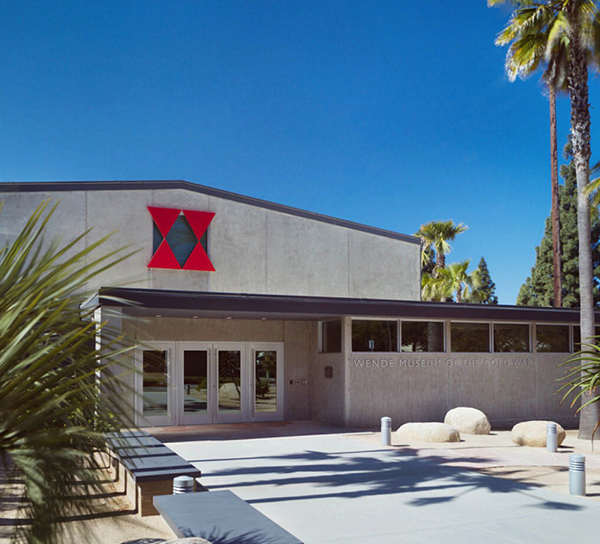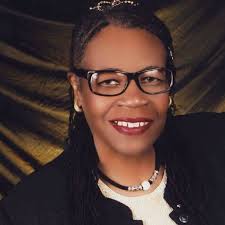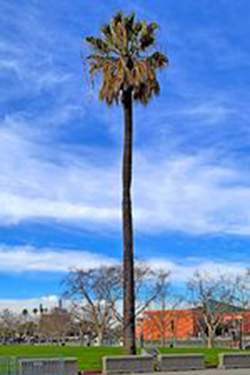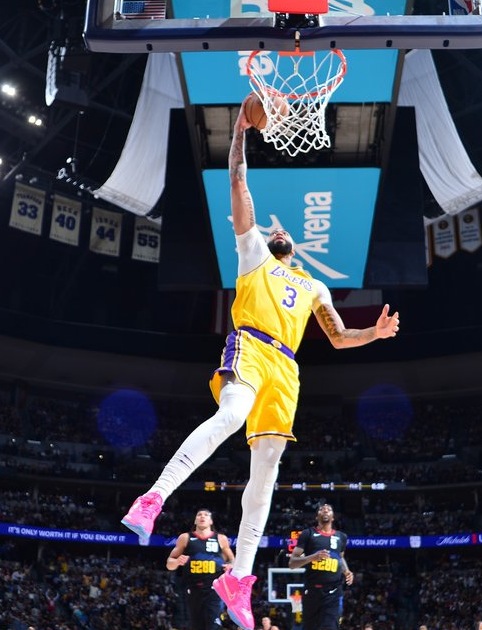By Darlene Donloe
Contributing Writer
CULVER CITY — The largest collection of Cold War memorabilia outside of Europe is reportedly located in, of all places, Culver City.
It’s housed in the Wende Museum, an art museum, cultural center and archive of the Cold War that explores social, political and cultural change.
The museum, which recently celebrated its 20th anniversary, was founded in 2002, by Justinian Jampol, a Los Angeles native and scholar of modern European history.
“I believe we are the largest collection of Soviet Bloc items outside of Europe,” said Andrew Hartwell, communications manager for the Wende Museum. “It’s a coincidence that the museum’s founder, Justinian Jampol, is from here and wanted to start a museum in his hometown.”
A self-described political nerd since he was a youngster, Hartwell, 36, who has a background in history, said working at the Wende Museum was high on his agenda.
“I majored in history and minored in international relations at UCLA,” said Hartwell, who grew up outside of Sacramento but now lives in Long Beach. “I am super into the museum. It was on my radar. Everything we do here is cool. We present the history side and the art side.
“We’re a museum of the material culture and history of the Cold War and of change. We’re interested in how ideas and governments change over time.”
Jampol reportedly launched the museum to address the wholesale neglect and rampant destruction of Cold War material culture in Eastern Europe and the Soviet Union that followed the fall of the Berlin Wall in 1989.
He noticed that during the early 1990s, some materials that documented the entire cultural history of what life was like in Eastern Europe and the Soviet Union were quickly disappearing. Jampol wanted to do something about it.
The museum’s collection originated with items acquired by Jampol in the mid-1990s and rapidly expanded in 2000 with a significant donation by activist Alwin Nachtweh and his partner Ulrike Wolf.
In 2004, the museum received funding from Arcadia, one of the United Kingdom’s philanthropic foundations with a mandate “to make a significant and necessary contribution to the illumination of a fascinating, yet still largely unexamined, era.”
The museum then initiated a campaign to acquire, preserve and provide access to threatened cultural materials of Cold War Eastern Europe and the Soviet Union.
In 2006, the museum expanded its collecting mission to include documenting personal histories from the era.
The museum, which has more than 100,000 artifacts, archives, and personal histories, pursues international scholarship, artistic interpretation, community engagement, digital access and experimental public programming.
The museum’s preservation efforts ensure that generations are able to more comprehensively investigate the Cold War era.
The Cold War era is worth exhibiting, said Hartwell, “because it continues to be relevant.”
“Its relevance is ever increasing,” said Hartwell, a married father of one.
“There are still tensions between Russia and the West.”
Hartwell said if there was a museum like the Wende in Europe, there would “still be a lot of sensitivity.”
“Here we have distance and are detached from it,” he said. “We get criticized from both sides, promoting this or that agenda. Los Angeles is a great place chronologically and geographically. We can be detached and try to prevent an overview from this view.”
When people visit the Wende Museum, Hartwell said they are often surprised at what is and is not on display.
“Some are really surprised,” he said. “People think Cold War and they think it’s going to be a bunch of spy stuff, KGB spy stuff, military hardware and even tanks. We are focused on material culture. We are focused on the art, the design, the books, movies and everything else they produced and how it reflects their ideology.”
Wende, a German word meaning “turning point” or “change,” is recognized as an unparalleled resource for insight into the Eastern perspective of the Cold War. The collection further serves as inspiration for the museum’s educational programming, which explores the complicated legacy of the Cold War and its relevance to contemporary social and political issues.
The avant-garde museum’s collection serves as a foundation for programs that illuminate the political and cultural changes of the past, offer opportunities to make sense of a changing present and inspire active participation in the personal and social changes that will shape the future.
Hartwell said there is much to see at the museum.
The museum’s current exhibits include “For Ruth, The Sky in Los Angeles: Ruth Wolf-Rehfeldt and David Horvitz” and “(De) constructing Ideology: The Cultural Revolution and Beyond.”
“We are focused on the construction of ideology,” Hartwell said. “The ways in which ideas are reflected in items people use.”
The museum has various programming that includes Chess! @ the Wende, as part of its Family Day (Nov. 27), OTIS True Stories (Dec. 3), Living the Revolution (Dec. 7) and Unfolded Narratives Workshop (Dec. 10). Online programming includes Art and Ideology: A Conversation with artist Zhang Hongtu (Jan. 11, 2023), Blood Letters and Dueling Visions of Salvation (February 2023), and Revolutionary Friendship is as Deep as the Ocean (March 5, 2023).
The film, “The White-Haired Girl,” will be screened at 4 p.m., Dec. 11.
One of the museum’s prized possessions is a moon rock.
“In terms of monetary value, you can’t really put a price on it,” Hartwell said. “We couldn’t get it insured. It’s priceless.”
Currently on display at the front of the Wende is Pink Lenin, sort of the Wende’s mascot (originally manufactured in the 1960s and then painted pink and green by protestors during the 1989 “Monday demonstrations” in Leipzig).
“It’s a vandalized monument,” Hartwell said. “It symbolizes what the museum is all about. We also have a piece of the Berlin Wall, which is located right next to the museum.”
There are two new contemporary pieces featured in its current exhibition which play with the iconography of China’s Cultural Revolution: Vivienne Tam and Zhang Hongtu’s “Mao Dress” (1995) and Wang Guangyi’s “Great Criticism – Coca Cola” (2005).
Visitors are also able to view an image of the ceramic sculpture “Chairman Mao Swims the Yangzi,” which was produced in China’s porcelain capital, Jingdezhen, during the Cultural Revolution (1966-1976). It commemorates an aging Mao swimming across the river in 1966 to demonstrate his strength and virility.
Upcoming exhibits next April at the Wende include a show on Vietnam from 1976 to the present.
“It will showcase the art and culture of Vietnam,” Hartwell said. “We are also doing a show on David Bowie when he was in the Soviet Union. He took the trans-Siberian Express train and took a photographer to document his trip. We will have that show in the spring.”
Also, late next year is the opening of the Glorya Kaufman Creative Community Center, a 7,500 square-foot mixed-use space dedicated to the arts, education, outreach and networking, which will be located next door to the museum. The state-of-the-art facility will include a theater, classrooms, a learning garden, and community gathering spaces.
The Wende Museum is open Friday-Sunday, 10 a.m.-5 p.m. No reservations are needed. RSVPs are encouraged for certain programs. Tours are conducted Friday-Sunday at 1 p.m.
The Wende Museum is located at 10808 Culver Blvd., Culver City, 310 216-1600, www.wendemuseum.org.
“Spotlight on L.A.” is a feature profiling little known places within the city. To propose a location for “Spotlight on L.A.,” send an email to dwanlass@wavetv.net.
Darlene Donloe is a freelance reporter for Wave Newspapers who covers South Los Angeles. She can be reached at ddonloe@gmail.com.












